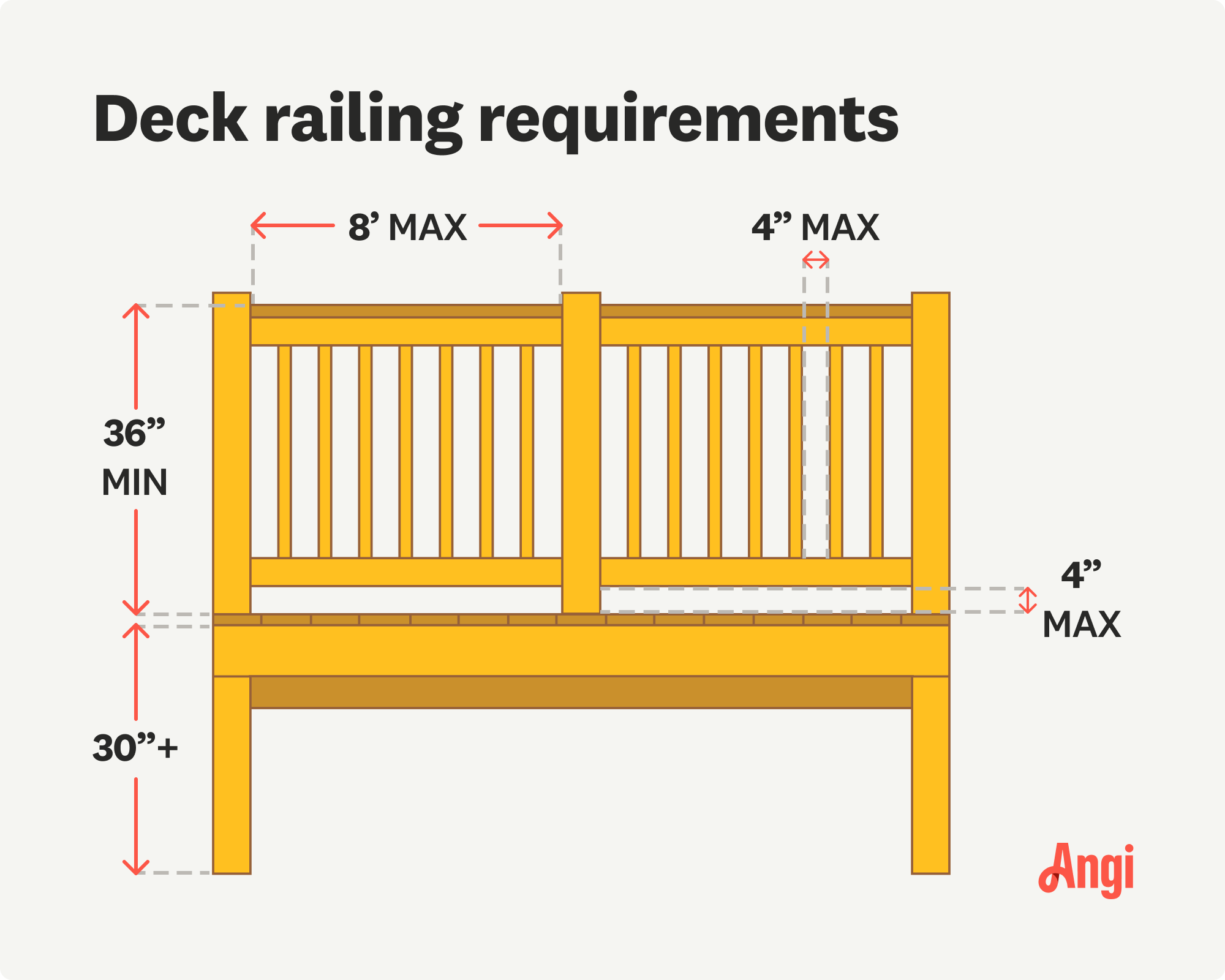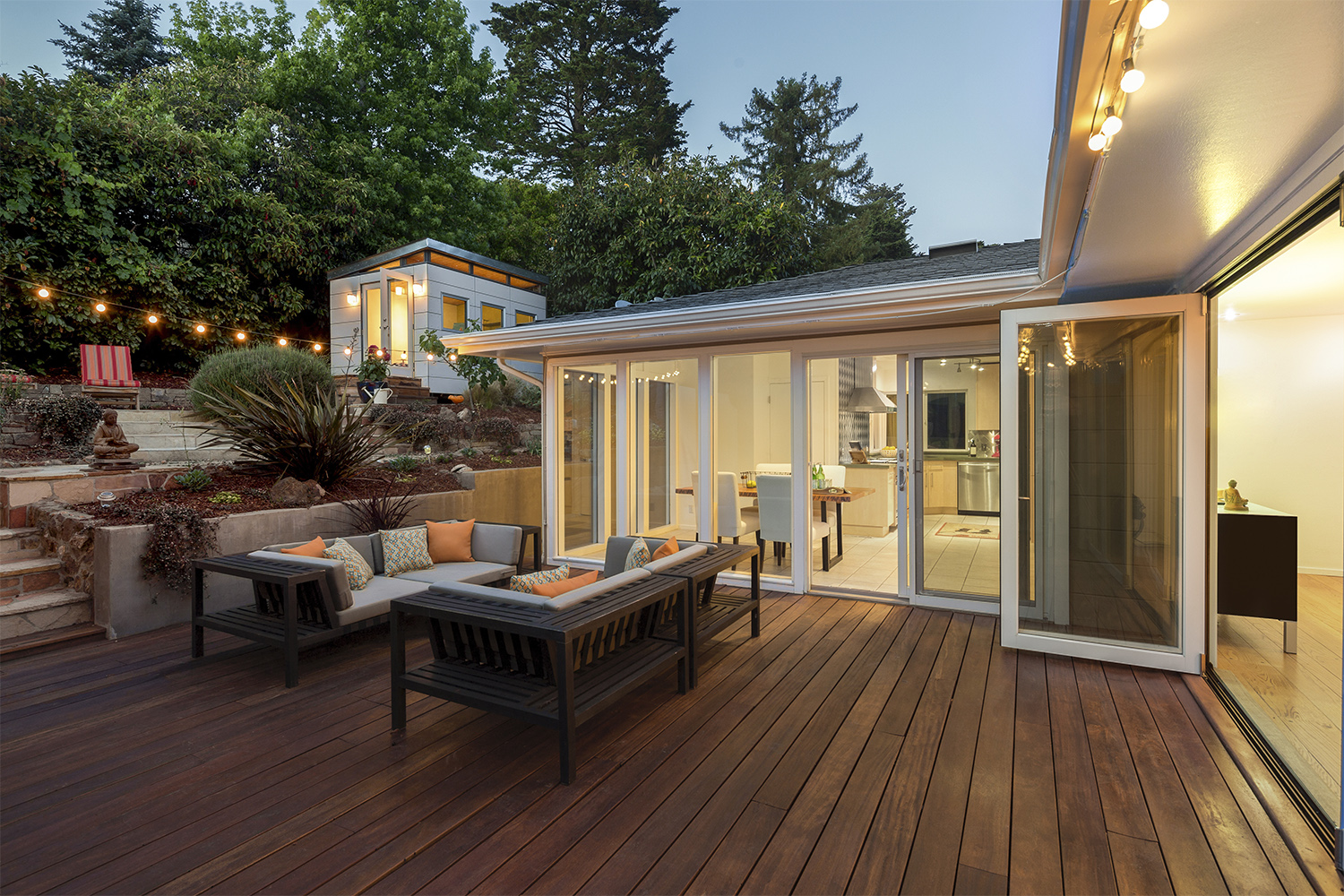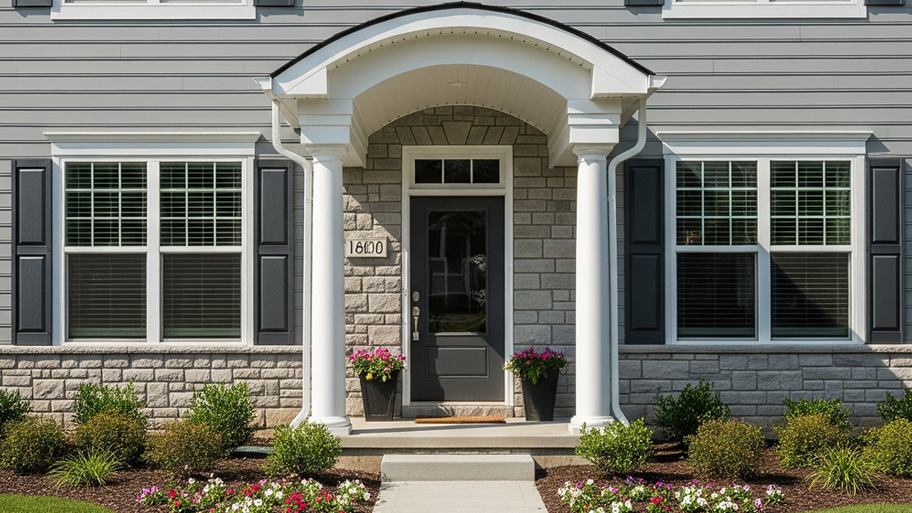
Trellises are structural pieces that add to your garden, but they can also add to your bills. Keep reading to find out how much a trellis costs to build.
It’s time for a safety and style upgrade


A worn-out deck railing isn’t just an eyesore—it can also be a safety hazard. Replacing it yourself can be a rewarding weekend project that adds aesthetics and peace of mind to your outdoor space. With the right tools, materials, and a careful approach, you can remove your old railing and install a new one that’s sturdy, stylish, and up to code. Learn how to replace a deck railing on your own so you can enjoy your outdoor space in no time.
Many carpentry projects come with some risk to personal safety. Always wear eye and ear protection and don a dust mask or respirator when cutting, sanding, or working with natural or treated wood. Steel-toe boots and sturdy work gloves can prevent splinters and cuts from stray pieces of wood and sharp power tools.
Before you start tearing down your existing deck railing, take some time to plan your project. Research your local railing height requirements, post-spacing codes, and other safety requirements.
Next, decide on the railing design and material that best suits your climate, maintenance preferences, and budget.
Then, take all necessary measurements to ensure you purchase the right materials and supplies.
Finally, rent or buy any tools you don’t already have—renting more expensive tools, such as a circular saw, from a local home improvement store can save money, especially if you only plan to use them once.

Start by unscrewing or prying off the existing railing panels, balusters, and posts. Use a drill or socket wrench to remove fasteners and a pry bar for stubborn sections. Be careful not to go into full-on demolition mode and damage your deck boards during removal, especially if they’ll remain in use. If any pieces are rusted or warped, use a reciprocating saw to cut them free. Keep a trash bin nearby for easy disposal, and remember to wear gloves and goggles to protect yourself from splinters and debris.

With the railing removed, inspect the exposed deck edges, joists, and framing for signs of rot, water damage, or insect infestation. Use a screwdriver to probe suspect areas—if it sinks in easily, the wood may need to be replaced. Sand any rough patches and fill small cracks with wood filler. Clean off sawdust and debris to give yourself a clear, safe surface to work on. This is also a good time to reseal exposed wood or apply a fresh coat of paint or stain to match your new railing.
Accurate measurements are essential for both safety and aesthetics. Use your tape measure and pencil to mark the locations of each post, following the manufacturer's instructions and local codes. Typical post spacing ranges from 4 to 8 feet, depending on the type of railing and load requirements. Make sure your marks align visually and structurally—your posts should sit squarely above joists or be bolted through blocking to ensure strong support. Double-check all measurements before drilling pilot holes to ensure accuracy.
Position your new posts on the deck surface or attached to the outer rim joist, depending on your setup. Secure each one using lag bolts, post anchors, or mounting brackets recommended by your railing system. Tighten hardware with a socket wrench and use a level to confirm each post is perfectly plumb. For additional stability, consider using two bolts per side at the base of each post.
Start with the bottom rail, aligning it with the pre-marked height or bracket locations on the posts. Use a spacer or measuring guide to ensure consistent height along the entire run. Secure the rail to the posts using screws or the fasteners provided in your kit. Then, attach the top rail, making sure it mirrors the same angle and height, especially on stairs or multi-level sections. Reinforce all connections with brackets or corner blocks as needed to prevent movement over time.

Depending on your railing type, you’ll either install individual balusters or slide pre-assembled infill panels into place. Measure the spacing between balusters to ensure code compliance (typically no more than 4 inches apart to prevent falls). Use a template or jig to speed up installation and maintain consistency. Secure each baluster or panel according to the directions in your kit—this may involve using top and bottom brackets, screws, or locking clips. Periodically step back to check visual alignment and spacing.
Go back over each connection point to tighten screws, bolts, and brackets. Add any decorative post caps or trim. If you’re using wood, apply a high-quality sealant, paint, or stain to protect against weather damage. Wipe down vinyl or metal railings with a damp cloth to remove fingerprints and debris. Now, you’re ready to host your backyard BBQ.
Replacing a deck railing seems straightforward, but several common mistakes can lead to poor results or safety risks:
Ignoring local code requirements: Always check railing height and spacing rules.
Skipping prep work: Incorrect measurements can lead to botched results.
Placing uneven posts: Failure to level posts can lead to instability and visual issues.
Using the wrong fasteners: Always use weather-resistant hardware to prevent rust.
Installing a new deck railing yourself can cost between $150 to $6,000, depending on materials. For example, a composite railing starts at $15 per linear foot, while a glass railing costs $200 to $500 per linear foot. The labor cost for installing a new deck railing averages $30 per linear foot on top of materials, depending on complexity and local rates. If you’re unsure about structural stability, safety compliance, or your carpentry skills, it’s worth it to hire a deck repair pro near you.
From average costs to expert advice, get all the answers you need to get your job done.

Trellises are structural pieces that add to your garden, but they can also add to your bills. Keep reading to find out how much a trellis costs to build.

Discover how much it costs to build a balcony, including average prices, cost factors, and tips to budget your project. Learn what impacts balcony construction costs.

Trex decking can offer your home a beautiful, durable outdoor oasis. Learn all about the costs of Trex decking based on space, size, and style.

Discover the cost of bamboo decking. Learn about installation prices, key cost factors, and ways to save on your bamboo deck project.

Wondering how to build deck stairs? Follow our helpful guide to learn how to complete the final step of your outdoor decking project.

A portico is a small, porch-like structure that adorns and protects a home’s front entrance. Learn what makes a portico and the benefits of building one.